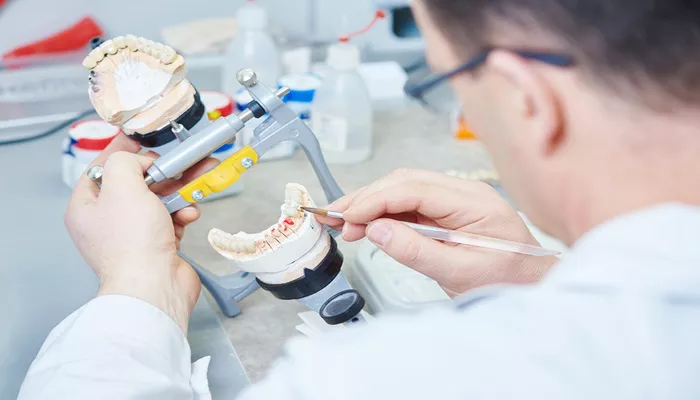While visiting his parents’ newly renovated home in Europe, a dentist made an unexpected discovery in one of the floor tiles: part of a human jawbone with a few remaining teeth. The man, who shared the discovery on Reddit, recognized the bone because of his profession.
The jawbone, found embedded in a travertine tile, appeared to have been cut at an angle. This made it look familiar to the dentist, who often works with CT scans of dental images. “As I specialize in implant dentistry, I deal with these types of images every day, and this one looked very familiar,” he said in an email to The Washington Post.
The dentist, using the Reddit username Kidipadeli75, chose not to disclose his full name to protect his family’s privacy. The jawbone was found in a tile made from travertine, a type of limestone typically formed near hot springs. The specific tile came from a quarry in the Denizli Basin of western Turkey, where the travertine was formed between 0.7 million and 1.8 million years ago. This suggests the jawbone did not belong to a recently deceased person.
Travertine is formed when changes in chemical conditions cause calcium carbonate to solidify into rock. It often forms in layers, trapping anything that falls into it, such as leaves, feathers, and even animals. This means that finding fossils in travertine is not an uncommon occurrence, according to Andrew Leier, a geologist at the University of South Carolina. “It’s somewhere between uncommon and common,” he said, adding, “But it’s not a crazy thing to happen.”
For example, the Getty Center in Los Angeles, which is clad in travertine, contains a variety of fossils, including algae, bacteria, and animal remains. Since the dentist’s discovery, researchers from around the world have contacted him to study the specimen. Plans are underway to remove the tile for further analysis. The team is also reaching out to the company that sold the tile to search for more fossils in other pieces from the same quarry.
Currently, scientists cannot determine the age or species of the jawbone just by looking at a photo. They plan to use a CT scanner to create a 3D model of the jawbone and conduct chemical tests on the rock to estimate its age. They may also analyze the tooth enamel to gather information about the person’s diet and attempt to recover ancient DNA.
One intriguing detail already observed in the photo is that the jawbone appears to have some dental work. “There appear to be absent teeth, and the bone tissue has filled into where the teeth once were,” said forensic dental consultants Amber D. Riley and Anthony R. Cardoza.
The discovery of the jawbone in the tile raises an interesting question: why wasn’t it noticed earlier? According to John Hawks, a paleoanthropologist at the University of Wisconsin-Madison, workers at the quarry typically make rough cuts of travertine, checking for major defects before polishing the stone. Small imperfections, which include fossils, are often overlooked because they add to the unique appeal of travertine tiles. Consumers typically choose their tiles based on samples, never seeing the actual pieces before installation.
So, if you’re renovating with travertine, it might be worth inspecting the tiles closely for hidden fossils. As John W. Kappelman Jr., a paleoanthropologist at the University of Texas at Austin, humorously shared, “Every time I am in Home Depot, I go through the travertine tile looking for fossils.”
Related topics:

